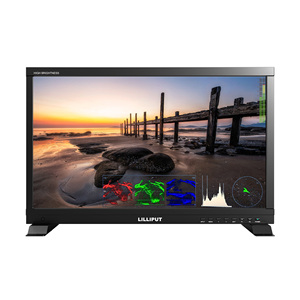Introduction to HDMI Waveform Monitor
The HDMI Waveform Monitor plays a crucial role in professional video and broadcast industries, enabling technicians and videographers to assess video signals for quality and accuracy. This sophisticated device visualizes the waveform of HDMI signals, providing vital information about color, brightness, and signal integrity. In an era where digital content production has surged, ensuring precise video output has become essential, and an HDMI waveform monitor serves as a fundamental tool in achieving that goal.
Types of HDMI Waveform Monitors
HDMI waveform monitors come in various types, catering to different professional needs. Each type varies in functionality, complexity, and price point:
- Portable HDMI Waveform Monitors - Compact and lightweight, these monitors are designed for on-the-go applications, ideal for fieldwork and remote shoots.
- Dedicated Rack-Mounted Monitors - These are robust units designed for the broadcast studio environment, offering extensive functionality with multiple input options.
- Software-Based Monitors - These utilize advanced software that runs on a computer or laptop, providing flexibility and advanced features for post-production analysis.
- Multi-Format Monitors - Supporting various input types beyond HDMI, these monitors can analyze and output multiple video signals, making them versatile in any audio-visual setup.
Features and Function of HDMI Waveform Monitors
HDMI waveform monitors are loaded with advanced features that enhance their analytical capabilities:
- Waveform Display - This feature displays the video signal waveform, revealing key information regarding color channels, brightness, and overall signal fidelity.
- Vectorscope Functionality - A vectorscope illustrates the color distribution within the signal, helping to identify color balance and saturation issues.
- Audio Level Monitoring - Many monitors also include audio level metering to ensure synchronized and optimal audio and video output.
- Real-Time Analysis - The ability to analyze signals in real time is crucial for immediate adjustments during live broadcasts or recordings.
- USB/HDMI Output - Facilitates connectivity for higher resolution outputs or software updates, ensuring the hardware remains state-of-the-art.
Applications of HDMI Waveform Monitors
The applications for the HDMI Waveform Monitor are expansive across various sectors:
- Broadcasting and Television Production - Used extensively to maintain signal integrity during live broadcasts and recording sessions.
- Film and Video Production - Filmmakers employ these monitors to ensure their footage meets professional standards for color and luminance during filming and post-production editing.
- Live Event Production - Essential for maintaining quality control during concerts, sports events, and public gatherings where visual clarity is paramount.
- Educational Purposes - Film schools and educational institutions use HDMI waveform monitors to teach students about video signal quality and color theory.
Advantages of Using HDMI Waveform Monitors
The benefits of integrating an HDMI waveform monitor into your workflow are substantial:
- Enhanced Quality Control - Provides precise measurements to ensure that video content meets professional standards.
- Informed Decision-Making - Real-time data allows for on-the-fly adjustments to maintain optimal quality, minimizing post-production corrections.
- Simplicity in Troubleshooting - Identifying issues with signal integrity or color discrepancies becomes straightforward, saving time and resources.
- Versatile Connectivity - Compatibility with various HDMI formats ensures that the monitor can be used in a diverse range of setups, making it a valuable tool in any arsenal.





















































